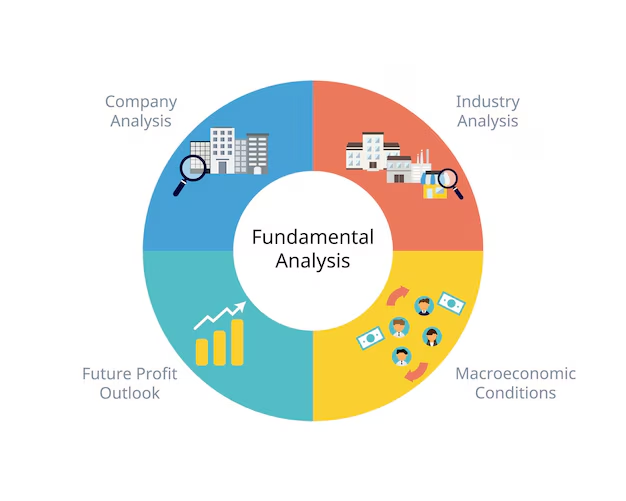Introduction to Investing
Investing is a crucial component of wealth building and effective financial planning. By allocating resources—typically money—into various financial vehicles, individuals aim to generate income or appreciate their capital over time. The significance of investing lies not only in the potential for financial return but also in the ability to secure one’s financial future. It allows investors to harness the power of compounding, achieving greater wealth than traditional savings methods would yield.
There are several types of investments that one can consider, including stocks, bonds, real estate, and mutual funds. Each of these investment vehicles carries its own risk-reward profile and offers different benefits. Stocks represent ownership in a company and can provide dividends as well as capital appreciation. Bonds, on the other hand, are fixed-income investments that typically offer lower returns but come with a degree of safety. Real estate can serve as both an investment and a way to generate rental income, while mutual funds allow individuals to pool their resources, investing in a diversified portfolio managed by professionals.
Having a defined investment strategy is essential for success in the markets. It reduces impulsive decision-making and allows investors to remain focused on their long-term financial goals. One key to developing this strategy is analyzing market conditions, which can inform decisions on asset allocation and potential investment opportunities. Understanding the fundamental aspects of investments, alongside mastering technical analysis, will allow investors to assess the viability of different options effectively. Recognizing the interplay between these two analytical approaches—fundamental vs technical analysis—plays a pivotal role in understanding market behavior and optimizing financial performance.
What is Technical Analysis?
Technical analysis is a method employed by traders and investors to evaluate securities by analyzing statistics generated from market activity, most notably price movements and trading volume. This analytical approach is grounded in the premise that historical price performance is a reliable indicator of future price movements. By examining price charts, technical analysts can identify patterns and trends that help predict potential market directions.
At the heart of technical analysis are various components, including price charts, which visually depict the historical prices of a security over different time frames. Common types of price charts include line charts, bar charts, and candlestick charts, each providing unique insights into market behavior. Volume indicators complement these charts by showing the amount of security traded over a specific period, offering clues about the strength of price movements. An increase in volume during a price rise, for example, may signal the sustainability of that trend.
Aside from charts and volume, technical analysts utilize several tools known as technical indicators to refine their assessments. Moving averages, which smooth out price data to create a single flowing line, enable traders to identify the direction of the trend over time. The Relative Strength Index (RSI), another popular indicator, measures the speed and change of price movements, helping traders determine overbought or oversold conditions in the market. Together, these elements form a comprehensive toolkit that technical analysts use to navigate the complexities of market dynamics.
Real-world applications of technical analysis can be seen in various trading strategies. For instance, day traders often rely heavily on technical indicators to make split-second buy and sell decisions, aiming to capitalize on short-term price fluctuations. Meanwhile, swing traders may use broader trends identified through technical analysis to inform their positions over a slightly longer time frame. Through these methods, technical analysis remains a critical component in the toolkit of countless investors navigating the financial markets.

Understanding Fundamental Analysis
Fundamental analysis is a method used by investors to evaluate a security’s intrinsic value by examining various economic, financial, and other qualitative and quantitative factors. This analytical approach differs significantly from technical analysis, which primarily focuses on price action and market trends. One key element of fundamental analysis involves scrutinizing company financial statements, including the balance sheet, income statement, and cash flow statement, to gain insights into a company’s operational efficiency and profitability.
A critical aspect of assessing a company’s intrinsic value through fundamental analysis is analyzing earnings reports. These reports provide essential information about a company’s revenue growth, profit margins, and overall financial health. Investors often look for indicators such as earnings per share (EPS), return on equity (ROE), and debt-to-equity ratio to form a comprehensive picture of a company’s performance compared to its competitors within the industry.
In addition to financial metrics, macroeconomic indicators also play a pivotal role in fundamental analysis. Factors such as interest rates, inflation rates, and GDP growth can greatly influence a company’s performance. News events and industry trends are equally important, as they can impact market sentiment and investor perception of a company’s future prospects. For instance, technological advancements or regulatory changes within an industry may significantly alter a company’s competitive landscape, affecting its valuation.
Through case studies of investors who have successfully utilized fundamental analysis, we can observe how this strategy leads to informed investment decisions. These examples illustrate the effectiveness of fundamental analysis in identifying undervalued stocks and capturing growth opportunities. Thus, understanding fundamental analysis serves as a crucial component of a comprehensive investment strategy and distinguishes it within the broader context of fundamental vs technical analysis.

Comparing Technical and Fundamental Analysis
When considering investment strategies, investors are often faced with the decision between fundamental and technical analysis. Each approach has distinct strengths and weaknesses that cater to different investment objectives and styles. Understanding these differences is essential for investors aiming to build a well-rounded portfolio.
Fundamental analysis focuses on evaluating a company’s intrinsic value by examining financial statements, economic indicators, and market conditions. This approach seeks to understand the underlying factors that drive value over time, making it particularly suitable for long-term investors. For instance, an investor using fundamental analysis might prioritize stocks with strong earnings growth, low debt levels, and competitive advantages. However, this approach may require patience as it often takes time for the market to recognize a company’s true worth, which can lead to periods of volatility.
On the other hand, technical analysis is centered on price movements and trading volume. It employs chart patterns and statistical indicators to forecast future price trends, making it a popular choice for short-term traders. Those who favor technical analysis often seek to capitalize on market momentum, utilizing tools such as moving averages and relative strength indicators. While this method can lead to quicker gains, it also carries the risk of significant losses, as price movements can be unpredictable and influenced by short-term sentiment.
Ultimately, both fundamental and technical analysis can complement each other in an effective investment strategy. For example, an investor might use fundamental analysis to identify undervalued stocks while employing technical analysis to determine optimal entry and exit points. By recognizing their respective strengths, investors can develop a balanced approach tailored to their individual investment goals, time horizons, and risk tolerance. Continuous learning and adaptation are vital in this ever-changing market landscape, ensuring that investors remain well-informed and ready to adjust their strategies as needed.